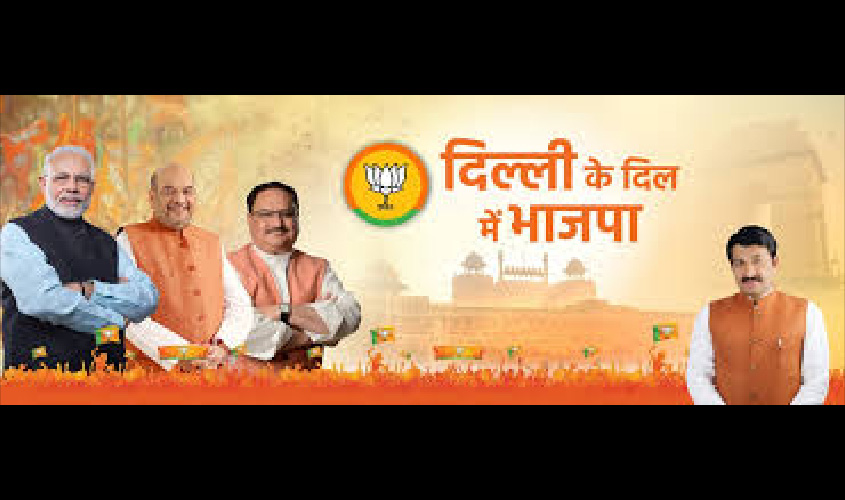NEW DELHI: The average voters’ turnout in Delhi Assembly polls has given jitters to the BJP leadership, but the party, riding on Hindu polarisation in the wake of the anti-CAA protests in Delhi, is confident of winning 45 to 50 seats. Party leaders believe the tension prevailing in Shaheen Bagh has turned the tide in fovour of the BJP. Many leaders believe that AAP’s support to the Shaheen Bagh protests has upset a large number of voters, particularly the Hindus. The party is also hopeful of getting a major chunk of Purvanchali or migrant voters who have reposed faith in the BJP in the 2017 Municipal elections followed by the Lok Sabha polls in 2019.
Among other factors that could give BJP an edge over the AAP is the Narendra Modi government’s decision of giving ownership rights to nearly 40 lakh people living in unauthorised colonies and the promise of new houses to slum dwellers. The BJP is expecting a rise in number of votes from slums that have traditionally voted in bulk to the Congress and the AAP.
Meanwhile, the BJP poll managers have instructed party workers to ensure victory over 6 to 7 Assembly seats in each of the Lok Sabha constituencies. Party has identified the strongest seats in every parliamentary constituency where focus will be to get the maximum votes. These Assembly seats mostly comprise the Punjabi and Baniya communities who are traditional BJP voters and form 20-25% of votes in Delhi. While special focus will be on getting the slum voters to polling booths, the party leaders are also banking heavily on the Purvanchali voters.
Every Parliamentary Constituency in Delhi has at least 3 to 4 Purvanchali dominated Assembly seats that can prove to be the biggest advantage to BJP. In total, there are 20 assembly seats that gave a huge presence of Purvanchali voters who have shown their inclination towards the BJP after the rise of Manoj Tiwari inn Delhi politics. Ever since the appointment of Tiwari as the president of Delhi BJP, the Purvanchali voters have never deserted the BJP in the two elections that followed.
Tiwari played the Purvanchali card in the 2017 MCD polls which was his first electoral test as president of the Delhi BJP. Despite huge anti-incumbency and poor performance of the BJP in MCDs, the BJP managed to win
Similarly in the 2019 Lok Sabha polls, the BJP bagged all seven Lok Sabha seats with huge margins. The break-up of the poll results shows that BJP was ahead of AAP and the Congress in 65 of the 70 assembly seats including all Purvanchali dominated Assembly seats. The significance of Purvanchali voters in Delhi can be gauged by the fact that they form nearly 35 to 40 per cent of votes in the city. In Delhi, there are at least 20 Assembly constituencies or 80 municipal wards where Purvanchalis constitute 17-47% of the vote share. In the 2015 Delhi Assembly Elections, these voters had shifted their loyalty to AAP. All 13 Purvanchali candidates fielded by AAP won with thumping majority in 2015 Assembly polls. In the 2013 Assembly polls, BJP had won 14 of these 20 seats while AAP bagged six seats. However, Tiwari did some damage control by bringing Purvanchali voters back to BJP fold in 2017 municipal elections winning all three civic bodies.

